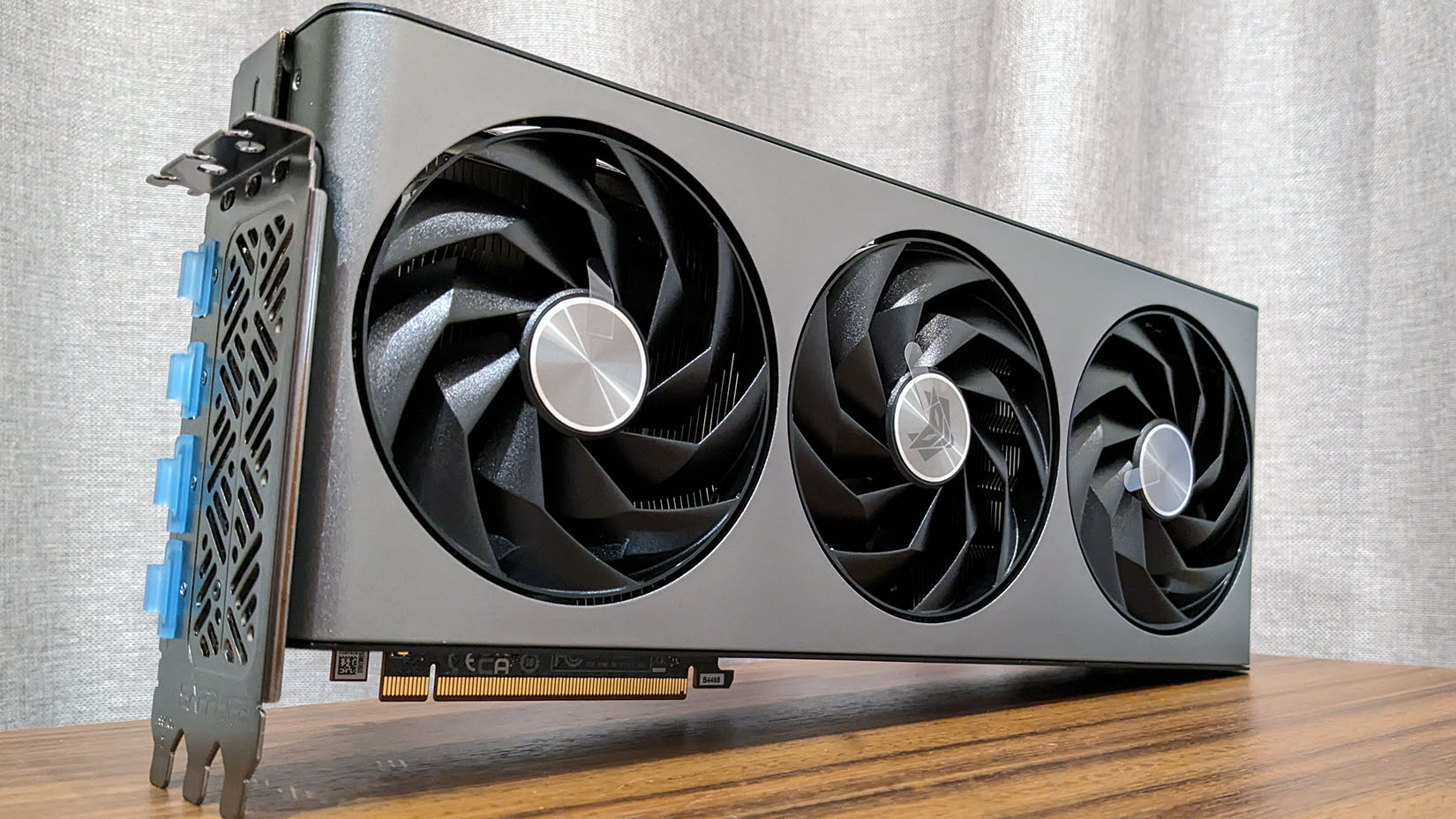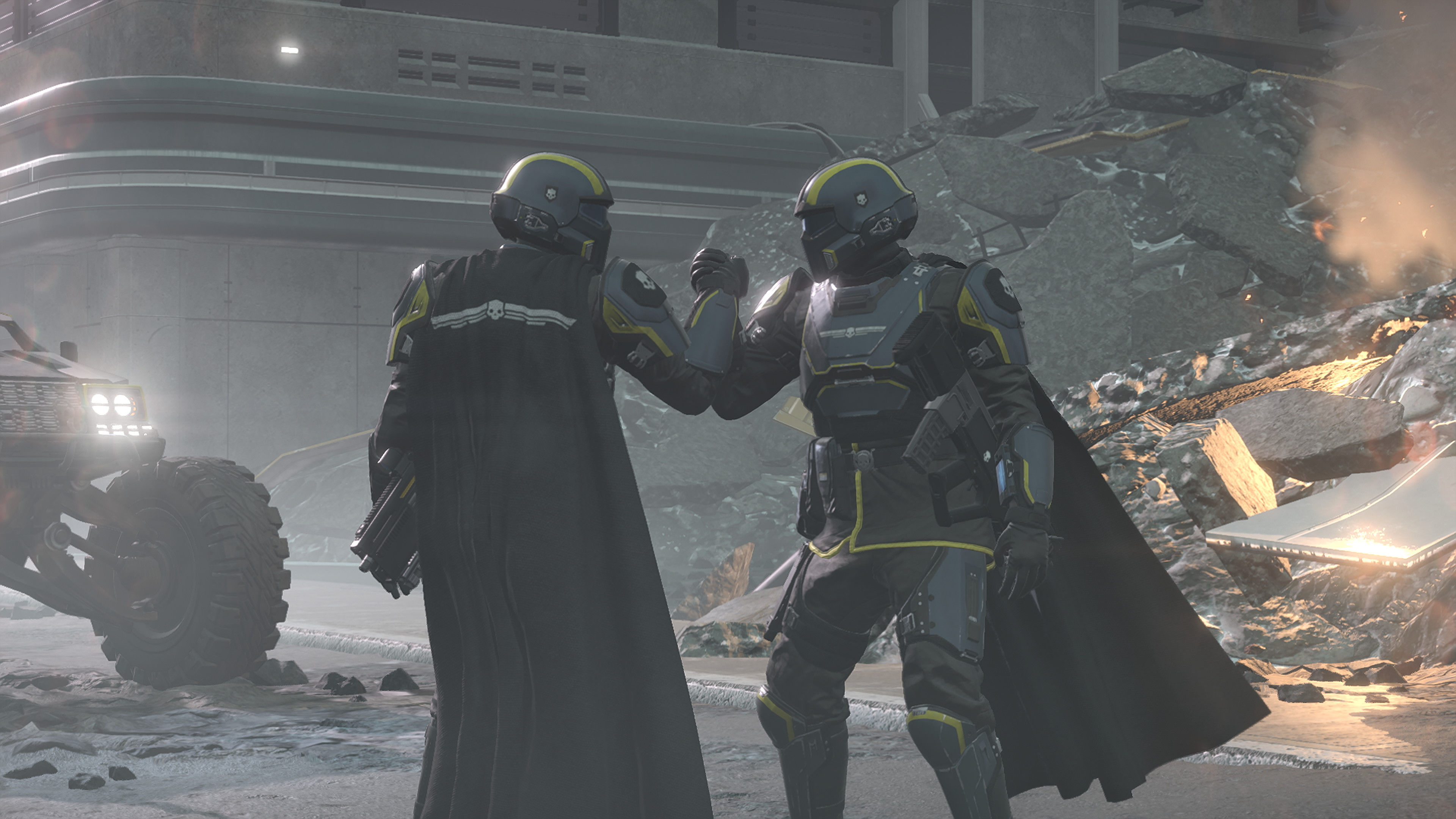
Sapphire Nitro+ RX 7800 XT Review
AMD has itself a strong competitor on its hands with the Radeon RX 7800 XT. In fact at its current base price of $499 / £480 / AU$879, it makes the RTX 4070 look pretty pricey. For review I have the Sapphire Nitro+ Radeon RX 7800 XT. I can safely say it’s faster, cooler, and quieter than the reference model, but it’s also more expensive. Is the price of a top-tier RX 7800 XT like the Nitro+ worth its $70 premium?
I’ve long been a fan of Sapphire’s Nitro+ cards. A while back I reviewed the Nitro+ RX 7900 XTX which features a similar cooler, albeit without the vapor chamber. Having said that, the 7900 XTX Nitro+ is a 420W card, whereas the 7800 XT Nitro+ is rated for 288W. Cooling will never be a problem for the RX 7800 XT Nitro+.
At $559 / £539 / AU$969 the Nitro+ is among the most expensive RX 7800 XT cards, even more than the Asus RX 7800 XT TUF Gaming OC. At that kind of price it’s hard to call it a mid range card, and it erodes all of the price advantage the base model RX 7800 XT has over the RTX 4070.
Premium cards carry, umm, a premium price, but if you don’t mind paying a bit extra, you’ll be rewarded with a big, bold and beautiful design that will look right at home in a classy RGB build.
The Nitro+ features a very chunky, but lovely looking triple slot cooler. The shroud is a matte grey color that’s quite minimalist. It comes with dedicated VRM cooling, a steel PCB frame, a full cover backplate and a full-length light bar along the side of the card that all really add a premium touch. Overall it looks and feels like an excellently engineered card.
The video outputs consist of dual DP 2.1 and dual HDMI 2.1 ports. You get dual BIOS, with a third position for a user defined setting, which is controlled via Sapphire’s Trixx software. Additionally, the card includes an ARGB output for synchronizing the card’s lighting with the rest of the system. There’s a 4-pin fan header too which can be used to run an adjacent fan according to GPU temperatures.
(Image credit: Future)
(Image credit: Future)
(Image credit: Future)
(Image credit: Future)
(Image credit: Future)
The Sapphire RX 7800 XT Nitro+ is built around the fully enabled Navi 32 chiplet GPU. It comes with a single 5nm Graphics Compute Die (GCD) and four surrounding 6nm Memory Cache Dies (MCDs). It comes with 16GB of 19.5 Gbps GDDR6 memory and a 256-bit bus. This is the kind of configuration I expect from mid-high-end GPU in 2023. It’s better to have memory that’s overspec than underspec. Who knows how much VRAM a game like Grand Theft Auto 6 will use when it launches…
(Image credit: Future)
The RX 7800 XT Nitro+ also packs in 60 Compute Units, 60 Ray Accelerators, and 96 ROPs. This is all identical to the reference RX 780 XT, but where the Sapphire Nitro+ differs is its clock speeds. The base RX 7800 XT features a game clock of 2,124MHz and a boost clock of 2,430MHz. The Nitro+ bumps these up to 2,254MHz and 2,565MHz respectively.
The total board power of the card is a relatively frugal 288W. That’s 25W higher then the reference card, which isn’t too bad, but its still far above the 200W of the RTX 4070, which also includes thirsty GDDR6X memory. Nvidia certainly wins handily when it comes to power efficiency.
It’s better to have memory that’s overspec than underspec. Who knows how much VRAM a game like Grand Theft Auto 6 will use when it launches…
So while the Sapphire Nitro+ RX 7800 XT is superior to the reference card, that price is a concern. Though it’s nowhere near the price of the RX 7900 XT, it does bring the RTX 4070 right into contention. Either is a good option. It’ll come down to you, your wallet, and the games you play and whether you value DLSS and ray tracing performance.
(Image credit: Future)
Before I get to the performance of the card, a few words on the cooler. It’s one of the quietest cards I’ve ever come across. The noise of my AIO cooler pump was easily louder than the Nitro’s triple fan solution.
It didn’t come with any clock speed compromises either, with an average of over 200MHz higher than a base RX 7800 XT. The power consumption measurement also came in at a respectable 275W, which is below the 288W the Nitro+ is officially rated at.
Synthetic and system performance
(Image credit: Future)
(Image credit: Future)
(Image credit: Future)
(Image credit: Future)
1080p gaming performance
(Image credit: Future)
(Image credit: Future)
(Image credit: Future)
(Image credit: Future)
(Image credit: Future)
(Image credit: Future)
(Image credit: Future)
1440p gaming performance
(Image credit: Future)
(Image credit: Future)
(Image credit: Future)
(Image credit: Future)
(Image credit: Future)
(Image credit: Future)
(Image credit: Future)
4K gaming performance
(Image credit: Future)
(Image credit: Future)
(Image credit: Future)
(Image credit: Future)
(Image credit: Future)
(Image credit: Future)
(Image credit: Future)
CPU: Intel Core i9 12900K
Motherboard: Asus ROG Z690 Maximus Hero
Cooler: Corsair H100i RGB
RAM: 32GB G.Skill Trident Z5 RGB DDR5-5600
Storage: 1TB WD Black SN850, 4TB Sabrent Rocket 4Q
PSU: Seasonic Prime TX 1600W
OS: Windows 11 22H2
Chassis: DimasTech Mini V2
Monitor: Dough Spectrum ES07D03
Honestly I expected the Sapphire RX 7800 XT Nitro+ to gain a bit more of a performance advantage over the reference RX 7800 XT, but the end result was only a few frames here and there.
I wonder if there is something within the architecture that holds the RX 7800 XT back a little. The chipset vs monolithic design could be a contributor, but then if you look at some of the specs of the RX 7800 XT and compare them to the RX 6800 XT, the RX 6800 XT has more ROPs, a higher shader count, and more Infinity Cache.
Anyway, coulda, shoulda, woulda. The Sapphire is faster than the base card, it’s also ahead of the RTX 4070 in raster operations, but when you add ray tracing to the mix, the RTX 4070 comes roaring back and pulls ahead in the more demanding scenarios.
(Image credit: Future)
The RX 7800 XT is a solid competitor from AMD. It competes well with the RTX 4070, though AMD really needs to get FSR 3 out of the gate to counter the advantage (and narrative) offered by DLSS. Its ray tracing is a generation behind, but it’s a lot better than it was with the RX 6000-series.
For a limited time, AMD is bundling Starfield with RX 7800 XT cards. There’s maybe a strong reason right there to choose an RX 7800 XT over the RTX 4070. That goes even more so right now with the better polished experience of playing Starfield on AMD GPUs.
Getting back to the Sapphire Nitro+, at $569 it’s $70 more expensive than the basic RX 7800 XTs. $70 gets you a better card, but $70 is not exactly chump change. Sapphire and other premium tier board makers have the luxury of a large hole in GPU prices, with the RX 7900 XT and RTX 4070 Ti costing a lot more. But that does push it right into RTX 4070 territory.
If you do want to jump into the market now, particularly if the Starfield bundle appeals to you, you may well be getting the best RX 7800 XT of all.
When comparing the Sapphire to other RX 7800 XT’s, it hard for me to say which way you should go. Its cooler, quieter, and a little faster. It’ll have a higher resale value down the line and it looks amazing. But $70 is money that could go towards a faster CPU or more memory. Either option has its pros and cons.
I’d personally hold off for a few weeks if you can. Jumping on a new card at the time of launch means you’re going to pay more. Let’s see how the price of the Sapphire RX 7800 XT settles towards the end of 2023.
If you do want to jump into the market now, particularly if the Starfield bundle appeals to you, you may well be getting the best RX 7800 XT of all. The likes of the Asus Strix and MSI Suprim are not available now—or perhaps ever, making the Sapphire one of very few top tier RX 7800 XT’s to choose from. If you have the cash, you’ll be rewarded with a top quality graphics card with all the trimmings.






